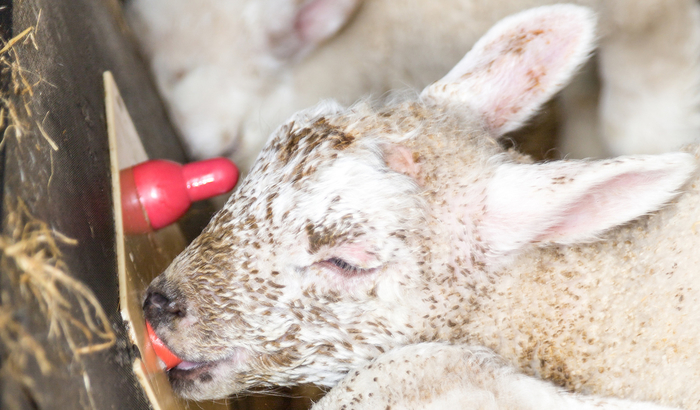Now there’s a Brexit deal, UK sheep producers are being urged to invest some of the better than expected returns from the autumn lamb and prime sheep sales into preparing for a successful 2021 lambing season.
“On the back of recent prices, there’s a fair amount of optimism about despite concerns about the implications of the Brexit deal. But the best thing UK sheep producers can do at the moment is make sure they prepare well to be able to rear as many healthy lambs as possible this spring,” says Volac’s GB National Sales Manager, Phil Brookes.
To help producers focus their minds, Volac has drawn up an eight-point plan to make sure UK sheep units are ready for the 2021 lambing season:
- Get pregnant ewe nutrition right. Ewes must be in the best condition possible for the last six weeks of pregnancy when 70% of foetal growth takes place. Get it wrong and you may have to cope with poor lamb survival rates, low birth weights and inferior quality ewe colostrum. Group and feed ewes according to your scanning results and their condition score. Getting the mineral balance right is important too, so ask your nutritionist for advice. Consider asking your vet to take blood samples from ewes 4-6 weeks pre-lambing just to make sure their diet is delivering the required energy and protein status.
- Prepare your sheep housing. If you lamb indoors, sheds should be thoroughly cleaned and disinfected before ewes are brought inside (at least two weeks before lambing). Use plenty of clean, dry bedding to reduce the risk of spreading lameness and other infections such as watery mouth, joint ill and coccidiosis. Good lighting is important too because it makes it so much easier to check stock without disturbing them too much. Avoid overcrowding otherwise stress and disease issues can spiral out of control: a typical 70kg ewe needs 1.2m2 to 1.4m2 of floor space and 45cm of trough space.
- Check your flock health plan. Talk to your vet about the essential disease management interventions pre and post lambing. For example, don’t forget to boost your ewes’ clostridial disease and pasteurellosis cover 4-6 weeks pre-lambing. Make sure any lame sheep are separated and treated well before housing. Check, too, the protocols for dealing with any abortion problems, scours or joint ill.
- Decide on the staffing levels you’ll need. Lambing is a time of year when an extra pair of hands can be invaluable. Have you got enough labour cover? Many flocks rely on students to help out, but it’s important to evaluate the level of help you will need – particularly against a backdrop of any local coronavirus restrictions and necessary workplace safety measures. Students vary in their experience and knowledge, so be clear when advertising for staff what level of skills and experience you are looking for. Any new staff recruited need to know what is expected from them from the start and should be given clear management protocols so that they know exactly what to do in any given situation.
- Make sure you have a system in place for rearing surplus lambs. New trial work has clearly shown that surplus lambs can be reared successfully away from the ewe. Ad lib ewe milk replacer feeding systems will help you save labour and secure better lamb growth rates. Why spend hours a day bottle-feeding when you could be prioritising your time elsewhere during a hectic lambing period?
- Stock up with the equipment and supplies you’ll need. Lambing is always hectic and once the season starts you won’t have the time to keeping dashing out for essential kit. You need to be focused on the job too, so get prepared. This means ordering well in advance materials such as disinfectant for lambing pens, iodine for navels, castration rings, feeding tubes, marker sprays, sterilisation equipment, milk replacer, colostrum replacer and any other lambing essentials.
- Set targets for reducing lamb losses. Good records are essential to benchmark performance and to help you identify any potential problem areas. Your recording system doesn’t have to be sophisticated or complicated – the important thing is to do it well and if you don’t record already, lambing time is a great time to start! You should be aiming for less than 15% lamb losses, but top performing flocks are achieving closer to 10%.
Targets for reducing lamb losses:
- Less than 5% from scanning to lambing
- Less than 5% during lambing and the first week of life
- Less than 2% from the first week after birth until weaning
- Less than 2% from weaning until sale or retention
Ask your vet for advice if:
- Ewe losses are more than 3%
- Lamb losses are more than 15%
- More than 2% of your ewes are barren at scanning
- Feed your surplus lambs enough milk. To grow effectively and finish profitably – just as well as lambs reared on the ewe – each one of your surplus lambs will need 9-11 litres of correctly mixed Lamlac ewe milk replacer from birth until weaning.


